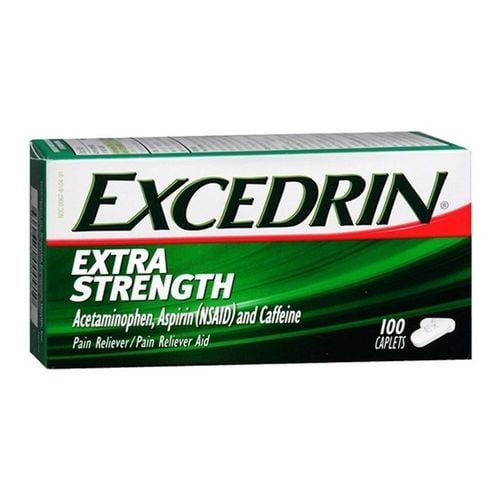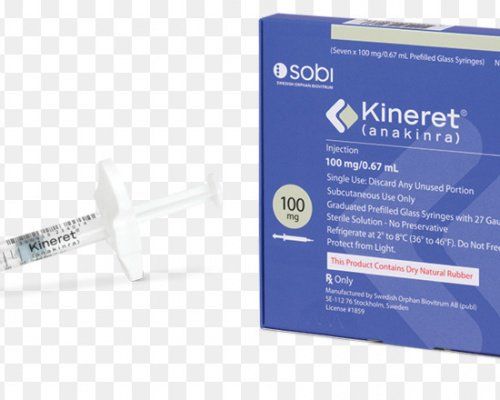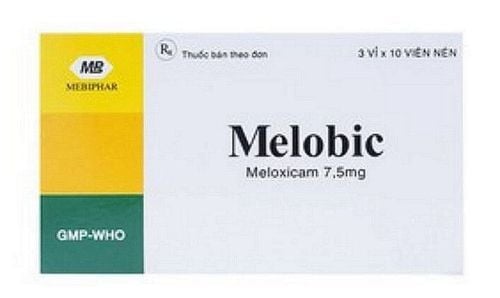This is an automatically translated article.
Vifenac 75mg/3ml with the main ingredient is Diclofenac, belongs to the group of antipyretic, analgesic, and non-steroidal anti-inflammatory drugs (NSAIDs). The drug is prepared in the form of injection, box of 10 tubes x 3ml or 50 ampoules x 3ml. So what is Vifenac 75mg/3ml, in what cases, how to use it and how much to use? The following article will provide information about Vifenac to readers.
1. Uses of Vifenac 75mg/3ml
Ingredients in each Vifenac 3ml tube include:
Diclofenac sodium 75mg. Excipients: Benzyl alcohol, Propylene glycol, Sodium hydroxide, Sodium bisulfite, and distilled water for injection. Diclofenac is a powerful pain reliever and anti-inflammatory drug. The drug that inhibits the synthesis of the chemical mediator in inflammatory and pain responses is prostaglandin by inhibiting the COX enzyme of this synthesis. From there, Vifenac inhibits the inflammatory process, relieves pain and prevents the migration of white blood cells into inflammatory foci. Besides, Diclofenac combined with opiate drugs to relieve pain after surgery, helps to reduce the need for opiate drugs.
Vifenac 75mg/3ml is indicated for the treatment of long-term inflammation and symptoms in acute attacks including:
Rheumatoid arthritis; Ankylosing spondylitis ; Osteoarthritis; Pain after minor obstetric, orthopedic or dental procedures or surgery; Relieve muscle and soft tissue pain in sports injuries; Gout arthritis ; Dysmenorrhea; Vasomotor headache, migraine.
2. Contraindications of Vifenac 75mg/3ml
Vifenac 75mg/3ml should not be used in patients with the following conditions:
Absolute contraindications:
Hypersensitivity to Diclofenac or any of its ingredients; Allergic reactions, anaphylaxis or angioedema when taking NSAIDs; Nasal polyps with aspirin-induced bronchospasm; Progressive hematopoietic disorder or bone marrow suppression. Relative contraindications, benefit/risk ratio must be considered before use:
Mild allergies, rhinitis, urticaria when taking NSAIDs; Anemia or asthma; Alcoholism, ulcerative colitis, Crohn's disease, smoking; Congestive heart failure, diabetes mellitus; Infection: Increases the risk of kidney failure; Coagulation disorders, platelet dysfunction; Heart failure, high blood pressure because it contributes to water retention; Renal dysfunction: increases the risk of hyperkalemia; Stomatitis ; Systemic lupus erythematosus. Patients should inform their doctor about their medical history and allergies so that they can consider using Vifenac 75mg/3ml and ensure safety during treatment.
3. Dosage and how to use Vifenac 75mg/3ml
How to use: Vifenac 75mg/3ml is used by intramuscular or intravenous injection. With the intramuscular route, it is necessary to give deep and slow intramuscular injection in cases of mild and moderate pain, dysmenorrhea, and migraine.
With the intravenous route, do not inject directly into the vein. The ampoule must be diluted with 100 ml of 0.9% sodium chloride solution or 5% dextrose. The intravenous route is used only for postoperative pain relief.
Patients need to be manipulated and supervised by medical staff when using Vifenac 75mg/3ml. In order to detect and promptly handle post-injection reactions, the patient needs to rest in place for 30 minutes under the supervision of medical staff.
Dosage:
Usual dose for adults: 1 ampule of 75mg/time x 2 times/day; May increase to 200 mg/day; Children: dose not determined.
4. Vifenac 75mg/3ml side effects
Some patients may experience unwanted side effects when taking Vifenac 75mg/3ml such as:
Common: Fluid retention, edema, mild to moderate headache, feeling of weakness, pain and cramping muscle cramps, constipation, indigestion, diarrhea, nausea. Uncommon: Angina, arrhythmia, skin rash, pruritus, gastrointestinal ulceration, tinnitus, dizziness, flatulence or abdominal distention. Rare: Nosebleeds, chest pain, congestive heart failure, seizures, amnesia, aseptic meningitis, depression, psychotic reactions, peripheral neuropathy, atopic and exfoliative dermatitis, Stevens-Johnson syndrome, colitis, gastrointestinal bleeding, abnormal vaginal bleeding, bloody urine, cystitis, anemia,. If the patient experiences undesirable effects during the treatment of Vifenac 75mg/3ml, it is necessary to stop taking the drug and go to a medical facility for appropriate treatment.
5. Special warnings and precautions when taking Vifenac
Patients who are sensitive to Diclofenac, including acetylsalicylic acid and Ketorolac, may also be sensitive to other non-steroidal anti-inflammatory drugs (NSAIDs). Patients with asthma who are sensitive to acetylsalicylic acid may experience bronchospasm and anaphylaxis. In dentistry: Diclofenac can cause inflammation, irritation or ulceration of the oral mucosa, increase the rate of infection, slow healing of scars and cause bleeding gums. Use caution when using Vifenac in people with a history of or are suffering from stomach ulcers, gastrointestinal bleeding. Vifenac may increase bleeding time during surgery. People with a history of liver disease need to monitor liver function while using Vifenac 75mg/3ml. In elderly patients, the starting dose should be reduced, up to half the usual adult dose, especially in patients over 70 years of age. Vifenac 75mg/3ml may cause drowsiness, somnolence, headache, so caution should be exercised in people who must perform the activities of driving and operating machinery. Vifenac 75mg/3ml should not be used during pregnancy, especially in the third trimester because it reduces uterine contractions, prolongs pregnancy or labor, and causes severe respiratory distress in the newborn. Diclofenac can be excreted in breast milk at a rate of 0.03 mg/kg Diclofenac per day in infants weighing 4 -5 kg. Therefore, do not use Vifenac 75mg/3ml for breastfeeding women.
6. Interactions of Vifenac 75mg/3ml
Vifenac 75mg/3ml drug may interact if used concurrently with the following drugs:
Paracetamol: Increases the risk of adverse effects on the kidneys. Alcohol, Corticosteroids, Glucocorticoids or Potassium Supplements: Risk of secondary gastrointestinal effects such as ulcers and bleeding. Heparin anticoagulants, thrombolytics: Increased risk of bleeding. Oral antidiabetic drugs or insulin: Diclofenac reduces the effect of drugs that cause hyperglycemia. Antihypertensives or diuretics: Reduces diuretic effect, increases the risk of secondary renal failure or decreased renal perfusion. The use of potassium-sparing diuretics may increase the risk of hyperkalemia. Aspirin: Increased risk of external bleeding. Cyclosporin or other nephrotoxic drugs: may increase the risk of intestinal ulcers or bleeding. Lithium: Increases serum lithium concentration, possibly leading to toxicity. Glycoside digitalis: Increases plasma concentrations of cardiac inotropes. Probenecid: Concomitant use with Diclofenac increases serum concentrations, thereby increasing the potential for drug toxicity. Above is all information about Vifenac 75mg/3ml. If you still have questions, contact your doctor or pharmacist for more information. Before using Vifenac 75mg/3ml, patients need to carefully read the instructions for use and strictly adhere to the indications and dosage throughout the course of treatment.













